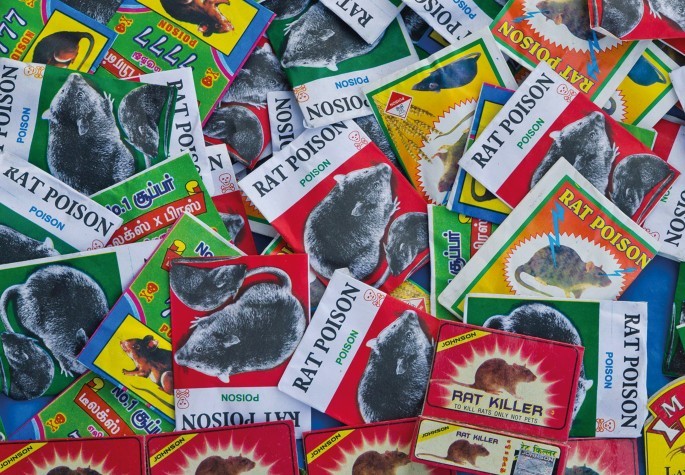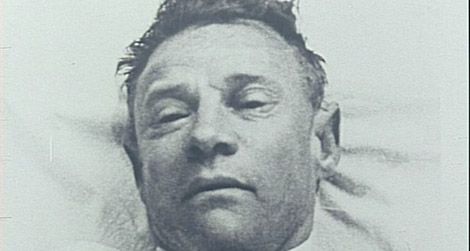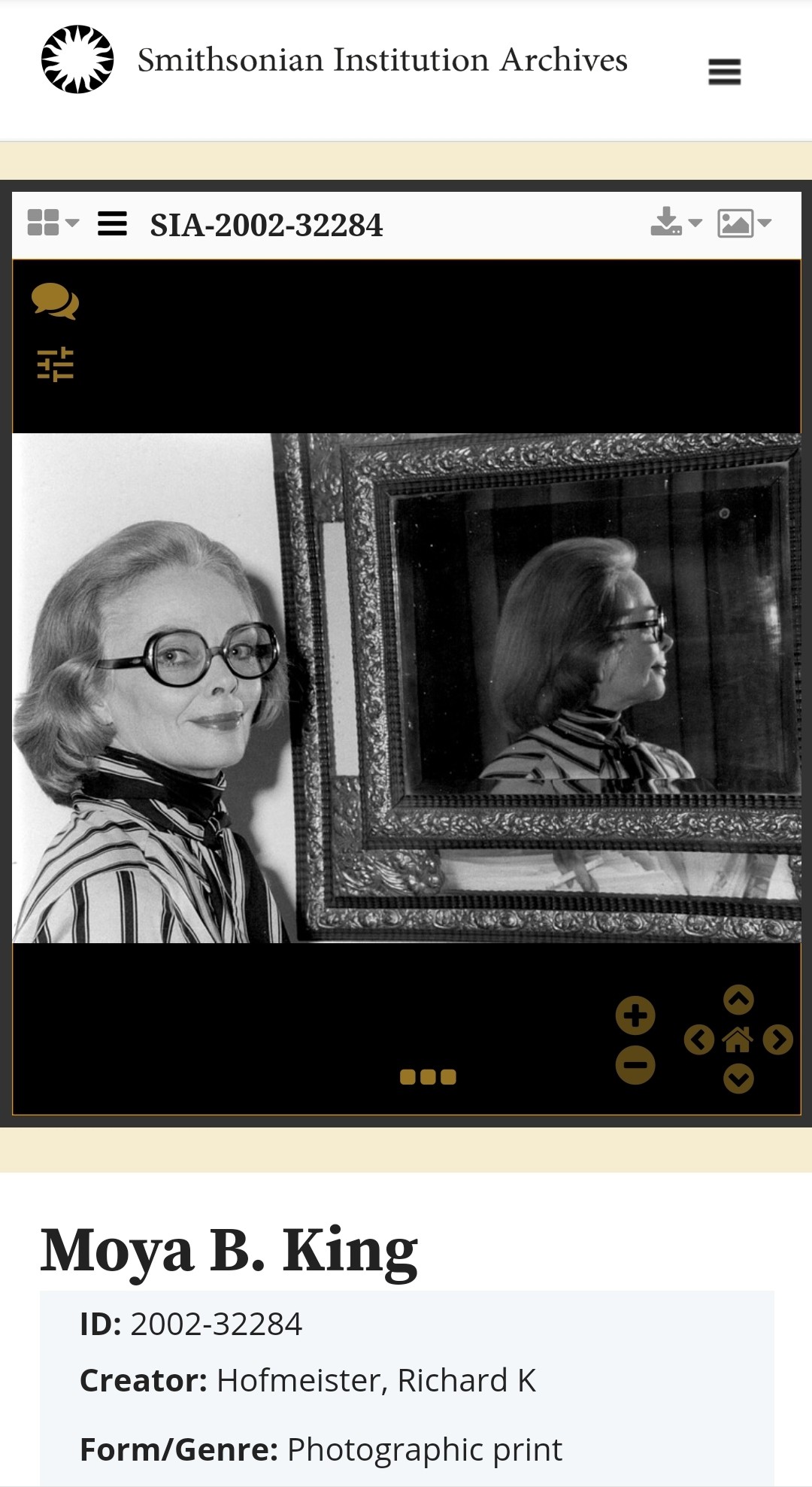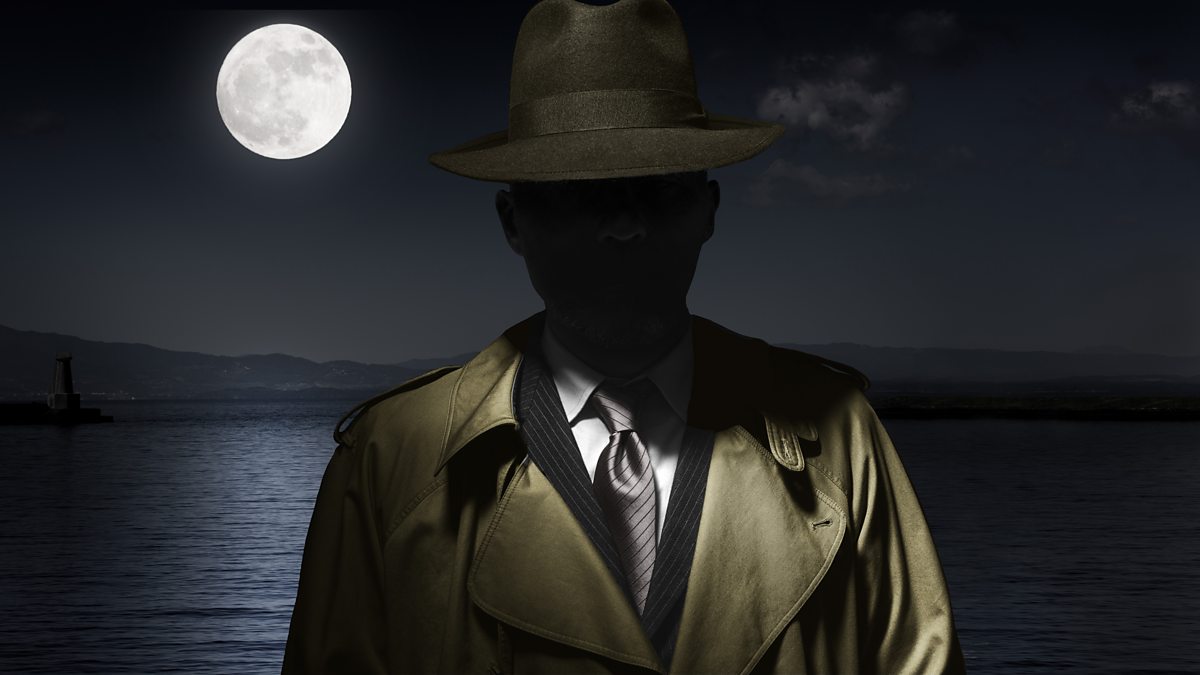- Oct 17, 2015
- 3,471
- 4,759
- AFL Club
- Adelaide
Interesting article on abc.net.au today (some photos deleted for space):

Canadian special effects artist Daniel Voshart devised the animation of the mystery man's face.
A cross-continental collaboration involving a virtual reality artist and two researchers has resulted in new images of the man whose body was found on Adelaide's Somerton beach.
His identity and cause of death have remained unsolved ever since he was spotted by passers-by propped against the seawall on December 1, 1948.
The case has baffled police and sparked theories about who he was, including speculation he was a Cold War spy or a jilted lover, and that he could have been poisoned.
Images of the mystery man are scarce, with unflattering black-and-white post-mortem photographs — and a death mask of his face and upper torso — all that remain.

Images of the plaster bust of the Somerton Man were used to create the animation.(Supplied: Daniel Voshart)
But virtual reality specialist Daniel Voshart, whose credits include work on US television show Star Trek: Discovery, recently joined forces with University of Adelaide Somerton Man researcher Derek Abbott and US genealogist Colleen Fitzpatrick to fix that problem.
The result is an animation, and several striking new images, showing what the Somerton Man could well have looked like when he was alive.
"I drew on all of Derek Abbott's research and list of things of what to pay attention to," Canada-based Voshart told ABC News.
"I was given a list of his hair colour, what his teeth were like, what his eye colour was, his skin tone."
Using artificial intelligence software, Voshart combined the physical descriptions of the Somerton Man with the autopsy photos and images of the plaster bust.
"Another part of it was, 'Can it jog someone's memory?'"
Missing tags and cryptic words
The Somerton Man is believed to have been aged about 40, had an athletic build and was found neatly dressed.
But the suit he was wearing had its tags cut off, and it did not take long for the mystery to deepen.
In January 1949, a suitcase believed to belong to the mystery man was found at Adelaide Railway Station.
It contained an odd assortment of items including clothes which also had their tags removed.

A scrap of paper marked "Tamam Shud" was found in the man's pocket.(Supplied: Professor Derek Abbott)
Several months later, a tiny rolled-up piece of paper inscribed with the words "Tamam Shud" was found hidden deep in the fob pocket of the man's trousers.
The torn paper was later traced back to a book of ancient Persian poetry, the Rubaiyat of Omar Khayyam, which had been left in the back seat of a car near where the body was found.
The words roughly translate as "the end" or "the finish", and the poems touch on themes including the need to live life to the fullest, and having no regrets when it ends.
Pandemic sparks new opportunity
When Star Trek: Discovery stopped filming during the coronavirus pandemic, the pause gave Voshart a chance to dabble in other projects, including the facial reconstruction of the Somerton Man.

The Somerton Man was found wearing a striped tie.(Supplied: Daniel Voshart)
"I had a lot of spare time and I learned a new software — you can mix faces and introduce human-like characteristics," he said.
"One of the things I've been doing while I had this time off during this lay-off was to test this software, and I was testing it for forensic uses.
"Can you accurately de-age someone? Can you accurately take two parents, mix them together, de-age that and try to come up with what their child might look like?"
Another of his projects involved creating life-like images of Roman emperors, using the same software he would later employ on his Somerton Man images.
"[It's] a bit of a circular process, but essentially the software allows you to introduce features from other images," he said.
Professor Abbott, who grew up a fan of Star Trek in the 1960s, said working with Voshart was "very cool" and was delighted with the results.
"This photograph is amazing — it just smacks you in the face because it looks so real and so engaging," he said.
Professor Abbott, who is a specialist in biomedical engineering at the University of Adelaide, was put in touch with Voshart by Dr Colleen Fitzpatrick, a pioneer in forensic genealogy in the United States.
Dr Fitzpatrick first became involved in the Somerton Man case after reading about it online, before coming to Australia and meeting Professor Abbott in 2012.
"It's one of these mysteries you have to solve and I think it's amazing that so much has been done and we still don't know who he is," she said.
She said the key to solving the mystery was DNA and would involve exhuming his body, which has the support of Attorney-General Vickie Chapman on the condition it is privately funded.
As for the speculation surrounding his bizarre death, Dr Fitzpatrick said she suspects the Somerton Man was neither a spy nor poisoned, but a normal man who suffered a burst blood vessel.
"If the Cold War [theory] is true that means there's a file somewhere, maybe in Russia, with an image of the actual guy."
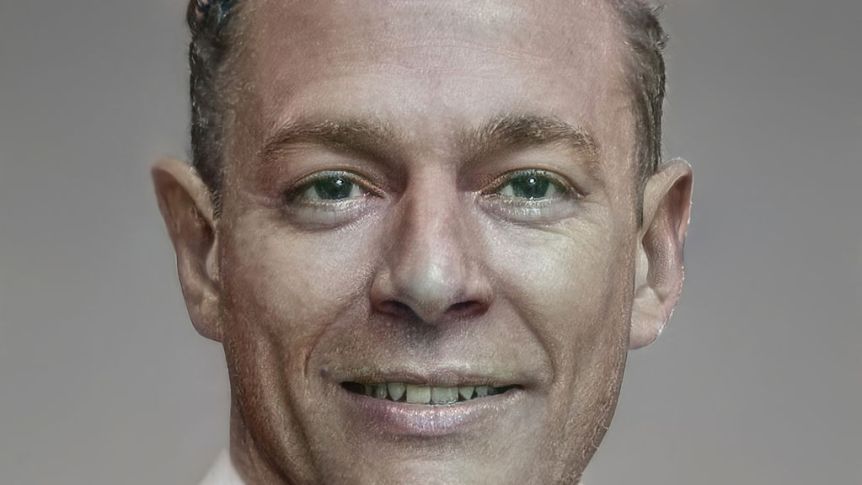
Canadian special effects artist Daniel Voshart devised the animation of the mystery man's face.
A cross-continental collaboration involving a virtual reality artist and two researchers has resulted in new images of the man whose body was found on Adelaide's Somerton beach.
His identity and cause of death have remained unsolved ever since he was spotted by passers-by propped against the seawall on December 1, 1948.
The case has baffled police and sparked theories about who he was, including speculation he was a Cold War spy or a jilted lover, and that he could have been poisoned.
Images of the mystery man are scarce, with unflattering black-and-white post-mortem photographs — and a death mask of his face and upper torso — all that remain.
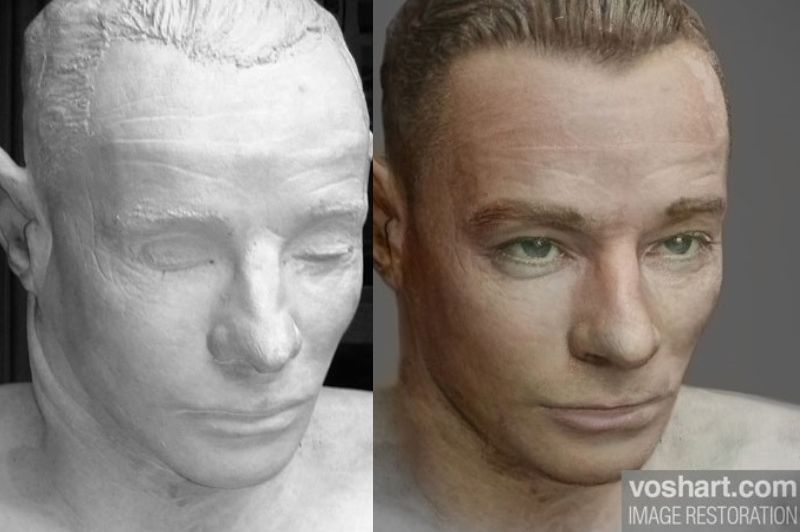
Images of the plaster bust of the Somerton Man were used to create the animation.(Supplied: Daniel Voshart)
But virtual reality specialist Daniel Voshart, whose credits include work on US television show Star Trek: Discovery, recently joined forces with University of Adelaide Somerton Man researcher Derek Abbott and US genealogist Colleen Fitzpatrick to fix that problem.
The result is an animation, and several striking new images, showing what the Somerton Man could well have looked like when he was alive.
"I drew on all of Derek Abbott's research and list of things of what to pay attention to," Canada-based Voshart told ABC News.
"I was given a list of his hair colour, what his teeth were like, what his eye colour was, his skin tone."
Using artificial intelligence software, Voshart combined the physical descriptions of the Somerton Man with the autopsy photos and images of the plaster bust.
"A large part of it was curiosity on my own end just to figure out what this man did look like."It's sort of like being a DJ where you get a lot of different knobs and controls, and I'm making dozens if not hundreds of small decisions to tweak the image in the direction that I want it," he said.
"Another part of it was, 'Can it jog someone's memory?'"
Missing tags and cryptic words
The Somerton Man is believed to have been aged about 40, had an athletic build and was found neatly dressed.
But the suit he was wearing had its tags cut off, and it did not take long for the mystery to deepen.
In January 1949, a suitcase believed to belong to the mystery man was found at Adelaide Railway Station.
It contained an odd assortment of items including clothes which also had their tags removed.
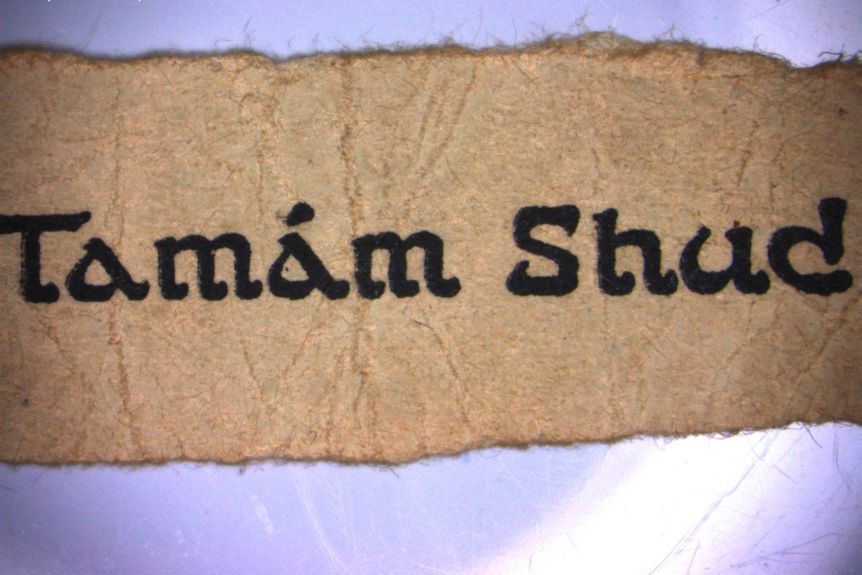
A scrap of paper marked "Tamam Shud" was found in the man's pocket.(Supplied: Professor Derek Abbott)
Several months later, a tiny rolled-up piece of paper inscribed with the words "Tamam Shud" was found hidden deep in the fob pocket of the man's trousers.
The torn paper was later traced back to a book of ancient Persian poetry, the Rubaiyat of Omar Khayyam, which had been left in the back seat of a car near where the body was found.
The words roughly translate as "the end" or "the finish", and the poems touch on themes including the need to live life to the fullest, and having no regrets when it ends.
Pandemic sparks new opportunity
When Star Trek: Discovery stopped filming during the coronavirus pandemic, the pause gave Voshart a chance to dabble in other projects, including the facial reconstruction of the Somerton Man.
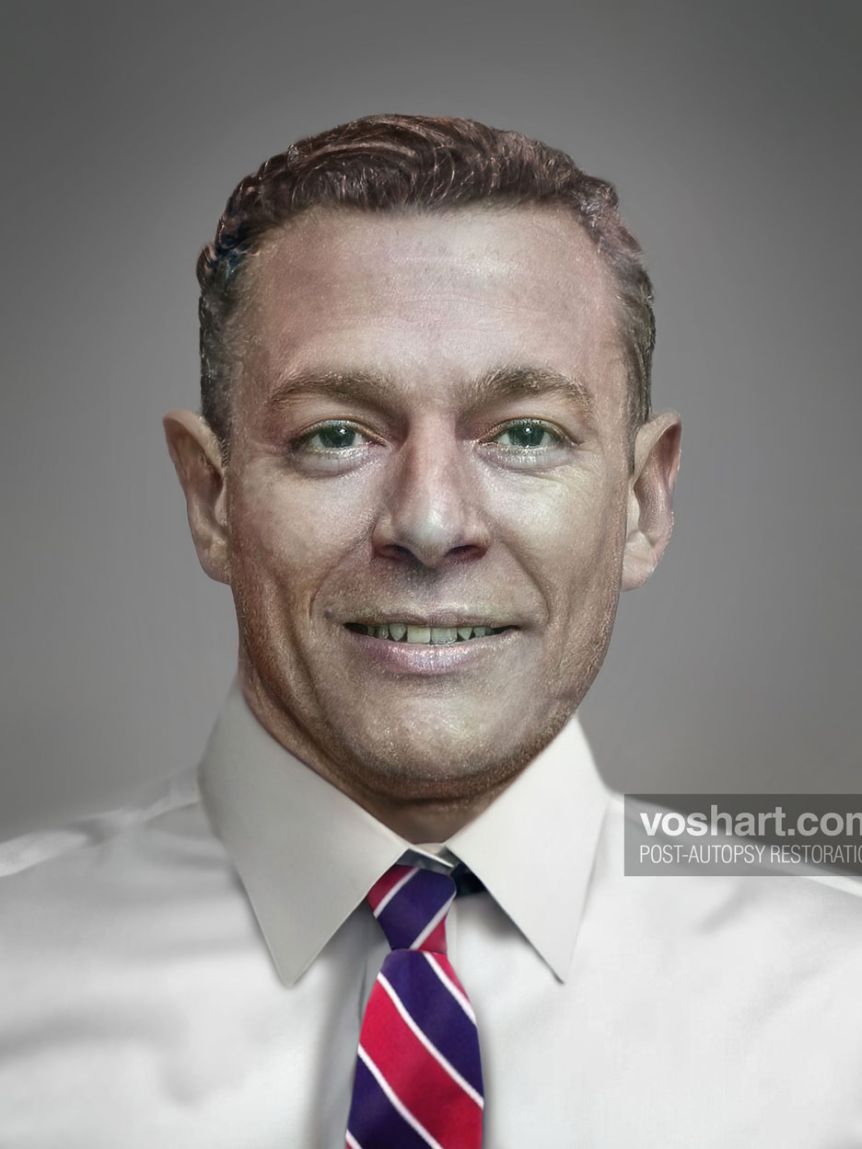
The Somerton Man was found wearing a striped tie.(Supplied: Daniel Voshart)
"I had a lot of spare time and I learned a new software — you can mix faces and introduce human-like characteristics," he said.
"One of the things I've been doing while I had this time off during this lay-off was to test this software, and I was testing it for forensic uses.
"Can you accurately de-age someone? Can you accurately take two parents, mix them together, de-age that and try to come up with what their child might look like?"
Another of his projects involved creating life-like images of Roman emperors, using the same software he would later employ on his Somerton Man images.
"[It's] a bit of a circular process, but essentially the software allows you to introduce features from other images," he said.
Using AI to 'bring him to life'"Where I come in, and my interpretation comes in, is using my intuition on how features might look from a different angle — what might happen when sunken eyes are opened."
Professor Abbott, who grew up a fan of Star Trek in the 1960s, said working with Voshart was "very cool" and was delighted with the results.
"This photograph is amazing — it just smacks you in the face because it looks so real and so engaging," he said.
"[He] has taken the image of the autopsy photo of the dead Somerton Man and used artificial intelligence to bring him to life."
Professor Abbott, who is a specialist in biomedical engineering at the University of Adelaide, was put in touch with Voshart by Dr Colleen Fitzpatrick, a pioneer in forensic genealogy in the United States.
Dr Fitzpatrick first became involved in the Somerton Man case after reading about it online, before coming to Australia and meeting Professor Abbott in 2012.
"It's one of these mysteries you have to solve and I think it's amazing that so much has been done and we still don't know who he is," she said.
"There's no internet, there's no credit cards, there's no bank statements that you can follow in 1948."
She said the key to solving the mystery was DNA and would involve exhuming his body, which has the support of Attorney-General Vickie Chapman on the condition it is privately funded.
As for the speculation surrounding his bizarre death, Dr Fitzpatrick said she suspects the Somerton Man was neither a spy nor poisoned, but a normal man who suffered a burst blood vessel.
But Voshart is still clinging to the spy theory, and hopes his work could trigger new discoveries in unexpected places."It's going to be an ordinary story with an extraordinary end," she said.
"If the Cold War [theory] is true that means there's a file somewhere, maybe in Russia, with an image of the actual guy."





